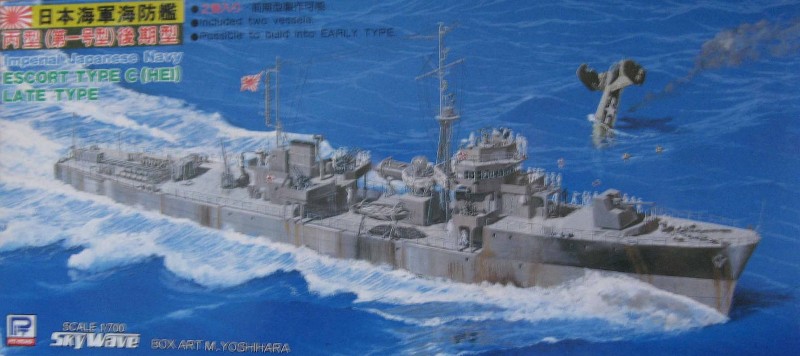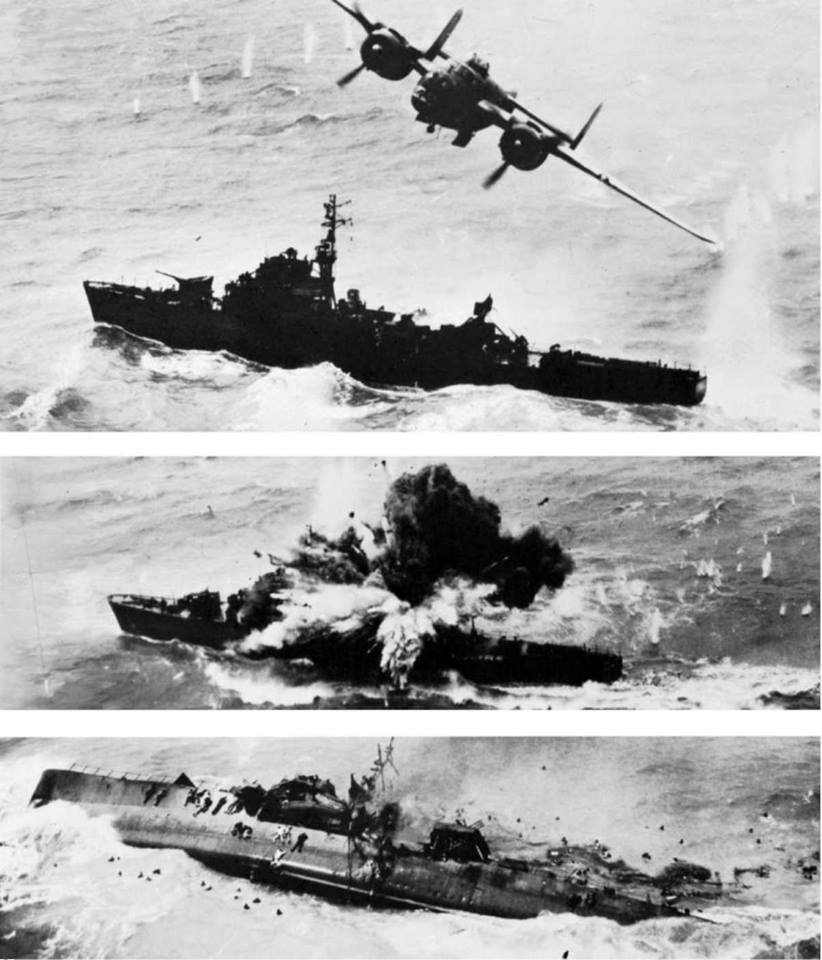
Box Art Escort Destroyer Type C Hei
 Box Art Escort Destroyer Type C Hei |
| DBTyp | Modell | |
| Basistyp | Type C Hei | |
| Ferner referenziert in Landeslisten als: (SU): C class, (Taiwan): C class, (China): C class, (Japan): Kaibokan Type C Hei | ||
| Kithersteller | Skywave | |
| Material | Plastik | |
| Herstellerland | Japan | Übergeordnete Kategorie: Asien |
| Betreiberland | Japan Für die Klasse: Japan SU China Taiwan | Übergeordnete Kategorie: Asien, Europa |
| Bauepoche | 0 (ungebaut) | |
| Themen | Zerstörer | (Zerstörer:) Zerstörer, Torpedoboote, Flottenbegleiter, große Geleitschiffe (Schiff:) http://uboat.net/allies/ (Schiff:) Geschichte chinesische Marine http://rwhiston.wordpress.com/2010/03/18/2/ und folgende; C2.Chin-Jap Krieg: http://forum.axishistory.com/viewtopic.php?f=101&t=75151 (Schiff:) Daten und Skizzen siehe http://russianships.info/eng/warships/ (Schiff:) Navies: Zur Liste aller Schiffsklassen der Länder |
| Betriebsaera | Wk2 Afterwar | |
| Scale | 1/700 | |
| TextDE | Doppelbausatz, früher und später Typ | |
| BaseVehicle | Schiff | |
 Originalbild B-25 Mitchell skip-bombs a Japanese Kaibokan escort ship, 6 April 1945 B-25 Mitchell, nicknamed "Ruthless Ruth", pulls up after making a skip-bombing run on Japanese coastal defense vessel No. 134. The plane was flown by USAAF Lieutenant Louie A. Mikell of the 499th Bomb Squadron ("Bats Outa Hell"), part of 5th Air Force. Japanese convoy HOMO-03 left Hong Kong enroute to Shanghai, consisting of subchasers CH-9 and CH-20, destroyer Amatsukaze, Kaibokan (escort destroyers) Coastal Defense Vessels No. 1 and No. 134, Tokai Maru Number 2 and Kine Maru on April 4, 1945. Attacks by US Air Force B-24 Liberators on April 5 sink the two transports, and the convoy breaks up. The subchasers return to Hong Kong while the destroyers head for Amoy, China. Enroute, CH-9, CH-20 and No. 1 are damaged by another wave of B-24s. The next day, the three destroyers are found by twenty-four B-25s of the 345th; the Americans volunteered for the long over-water flight from their base at San Marcelino, Luzon to the Japanese ships off the China coast. Lt. Mikell scored a near-miss with his delayed fuse bomb; Lieutenant Francis Thompson strafed the ship; the flight leader scored a hit amidships. No. 134 rolled over to starboard and sank, her surviving crew abandoning ship to the shark-infested waters. No. 1 was also skip-bombed and sank. Amatsukaze destroyer was also heavy damaged. Her crew beached the ship a mile away on a reef, at the entrance to Amoy harbor, but slipped stern-first into the sea and sank with the loss of 44 of her crew. The tactic used in these attacks is called skip-bombing. Skip bombing is a low-altitude bombing attack that has been successfully used against naval targets. It consists of a string of from two to four bombs dropped from such an altitude and distance from the target that a complete miss is improbable. The attack should be delivered with the idea in mind of securing a maximum of surprise and should not be repeated against the same targets too often. The altitude of the attack should be from 200 to 300 feet (60-90 meters) and the bomb-release line from 350 to 200 feet (60-100 meter) from the target. Skip bombing was very effective but also potentially suicidal if the target was on high alert and equipped with good AA guns and directors. Interesting stuff: In the last frame, you can see a lot of men in the water, or working their way down the port side of the hull. Sources say that 44 of her crew of 240 died in this attack. The ship in the photo is a Kaikoban type C diesel engined escort ship. The C Type escorts were used for convoy escort operations. However by 1944 the advantage had passed to the US, and many C Type vessels became casualties as the Japanese merchant fleet was devastated by the American submarine offensive. There were 53 finished during the war of the 300 planned, and several completed after World War II ended. 26 were sunk during the war.http://www.facebook.com/WeaponSystems/photos/a.729516493759057.1073741928.211645425546169/1029524517091585/?type=1 Dieses Bild oder sonstige Werk ist gemeinfrei (Public Domain) da es von einem Militärangehörigen erstellt wurde von einem Staat, in dem solche Werke public domain sind (z.Bsp. US, UK) (Escort Destroyer Type C Hei) |